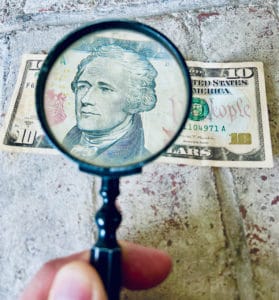The Securities and Exchange Commission (SEC) has issued its anticipated report on market structure, including the emergence of Meme stocks – like GameStop. Some observers said there was little new in the report as it towed the line of SEC Chairman Gary Gensler’s recent proclamations.
No big surprises here. And the policy “recommendations” are the same ones that Gensler has been talking about for months already. https://t.co/K8ImMF1e5W
— Jennifer J. Schulp (@jenniferjschulp) October 18, 2021
The document starts with addressing the Gamestop phenomenon that kicked off earlier this year. Retail traders chatting on public boards helped to drive the share price to outlandish valuations. The rapid price increase hit short sellers hard, mainly hedge funds, generating losses. This event, along with other similar occurrences generated much chatter within the cable news networks while Congress held multiple hearings in attempt to sort everything out.
 The SEC report states:
The SEC report states:
“The extreme volatility in meme stocks in January 2021 tested the capacity and resiliency of our securities markets in a way that few could have anticipated. At the same time, the trading in meme stocks during this time highlighted an important feature of United States securities markets in the 21st century: broad participation. There are many different types of investors, and they buy and sell stocks for many different reasons. However, when share prices change rapidly and brokerage firms suddenly suspend trading, investors may lose money.”
These events provide an “opportunity to reflect” on market structure, according to the SEC. Additional areas for review include:
- Forces that may cause a brokerage to restrict trading. A number of clearing brokers experienced intraday margin calls from a clearinghouse. In reaction, some broker-dealers decided to restrict trading in a limited number of individual stocks in a way that some investors may not have anticipated.
- Digital engagement practices and payment for order flow. Consideration should be
given to whether game-like features and celebratory animations that are likely intended to create positive feedback from trading lead investors to trade more than they would otherwise. In addition, payment for order flow and the incentives it creates may cause broker-dealers to find novel ways to increase customer trading. - Trading in dark pools and through wholesalers. Much of the retail order flow in GME was purchased by wholesalers and executed off-exchange. Such trading interest is less visible to the wider market.
- Short selling and market dynamics. While short selling and calls on social media for short squeezes received a great deal of media attention, the interplay between shorting and price dynamics is more complex than these narratives would suggest. Improved reporting of short sales would allow regulators to better track these dynamics.
The report is available below.

